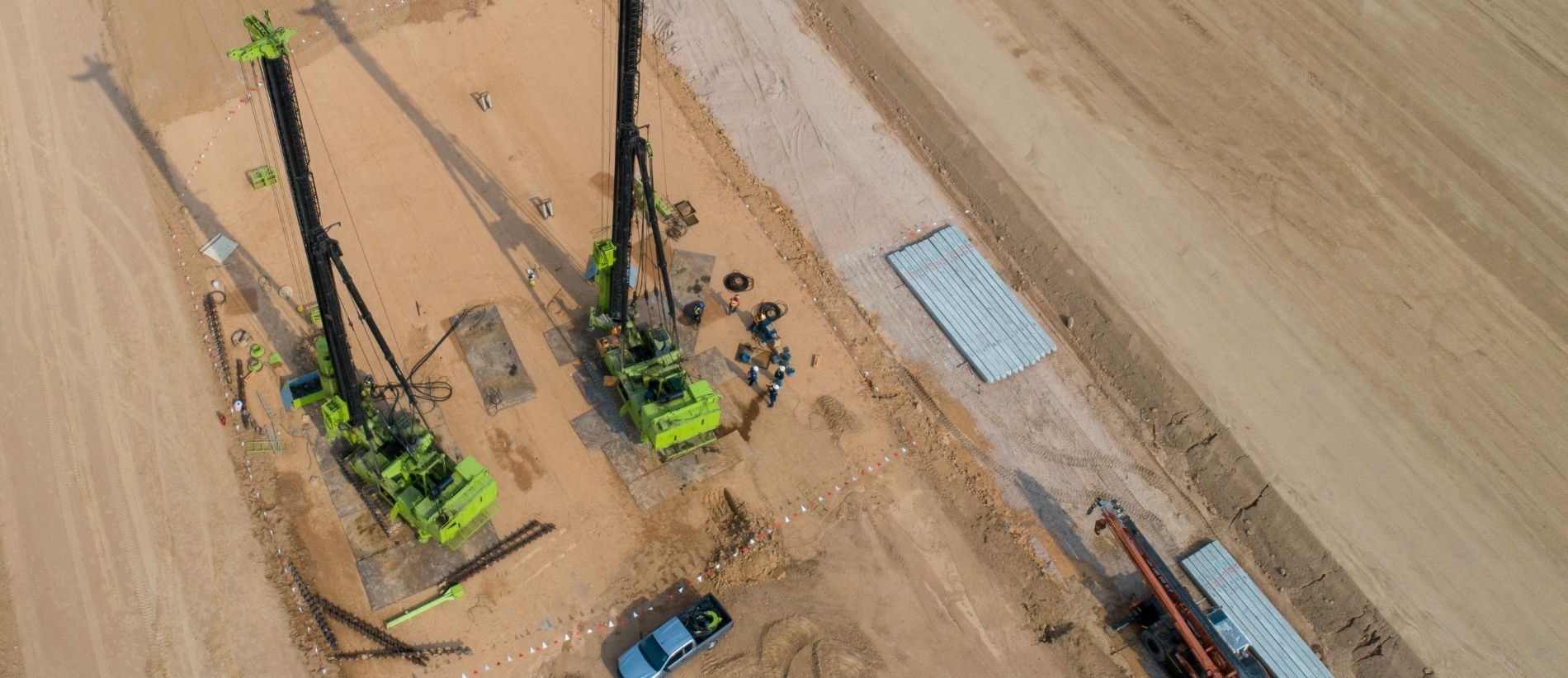The construction sector has significant potential for reducing its environmental impact as pressure from investors, regulators, governments as well as insurers is on the rise.
Construction is a resource-heavy industry: It requires the extraction of raw materials, chemicals are used on site and fuel is burned by excavators and lorries. Globally, the built environment generates 30% of total greenhouse gas emissions and construction uses 32% of the world's natural resources, according to the Chartered Institute of Building (opens a new window) (CIOB).
Environmental regulation
Environmental issues are currently high on the political agenda since ESG related topics are trending and the UN Climate Change Conference 2021 is approaching fast. The UK plans to become a net zero carbon area by 2050 (opens a new window) and the European Union has made similar targets legally binding (opens a new window).
The construction industry’s efforts to reduce carbon emissions will make a real difference to whether the countries can meet their targets. In 2017, the construction industry has agreed (opens a new window) with the UK government to halve emissions in the built environment by 2025, for example by creating buildings that are eco-friendly by design. Further, the UK’s Environment Bill (opens a new window) is expected to set legally binding targets for biodiversity, air quality, waste and water. Businesses in construction need to prepare for its introduction.
Other stakeholders’ positions
Investors are shifting their portfolio in real estate and infrastructure towards companies and products that integrate ESG factors. ESG-focused investment has an increasingly influential cohort of backers. A November 2020 report released by PwC Luxembourg (opens a new window) showed that 77% of institutional investors plan to stop purchasing non-ESG products by 2022.
A group of global insurers have joined forces with leading banks and asset managers to launch a new alliance (opens a new window) that seeks not only to align investment portfolios but also underwriting towards net-zero emissions.
Major insurers and banks will shortly have to adhere to the TCFD – the climate related financial disclosures (opens a new window). These will force continuing change in the way that insurers both raise capital, invest premiums and underwrite risks.
Lloyd’s has made commitments in its ESG 2020 report and is also developing underwriting policies around a climate action plan with specific reference to housing and the construction industry.
While the pressure from stakeholders may create some challenges for the construction industry these developments are also an opportunity to turn green credentials into a competitive advantage. Investors, insurers and other stakeholders are increasingly likely to show appreciation and account for a construction business’ efforts to reduce the environmental impact.
Making construction cleaner
While creating environmentally friendly buildings, the construction industry should also consider how to reduce its impact on the environment during the construction of these buildings. Managing carbon emissions also helps companies manage cost, as reducing one will more often than not also lower the other. Some companies are even looking beyond net zero to consider how they can become carbon negative.
The Construction Playbook (opens a new window) details how the UK government and the industry can jointly deliver public sector works more efficiently while minimising greenhouse gas emissions of projects. The Playbook also refers to minimising the use of resources, reducing waste, increasing biodiversity and delivering positive social impact.
Options for construction firms are plentiful:
Install energy efficient cabins on site with proper insulation and LED lighting
Reduce the energy used for transportation of materials during construction by sourcing more locally and lowering the number of required journeys.
Consider sourcing recycled products
Decarbonize fleet vehicles by switching to renewable energy tariffs
Consider the electrification of heavy construction equipment
Partner with suppliers to decarbonize
Reduce business travel
Consider adopting remote monitoring and maintenance technology
Consider off-site fabrication of materials and assembly
Improve on-site maintenance with lean practices, waste reduction and landfill avoidance
Reduce the waste by coordinating with other organisations to use left-over materials and recycle where possible
Set sustainability targets and regularly measure them against performance
Find replacements for high-carbon materials ― the manufacture of cement alone is responsible for around 8% of global CO2 emissions
Select suppliers that prioritise sustainable practices by reviewing their environmental policies and efforts to reduce waste, use of transport and raw materials.
One way of demonstrating environmental credentials to clients, investors and tenants is the BREEAM (opens a new window) (Building Research Establishment Environmental Assessment Method) certification, which assesses an asset's environmental, social and economic sustainability performance, using standards developed by the Building Research Establishment.
Emerging risks
There is, however, also the risk for designers and contractors that new green developments end up not meeting the thermal efficiency or emission performance obligations contractually required by funders and employers – some of which could be viewed as contractual (rather than negligence based) liabilities. Further, construction firms may not meet the emission targets or waste reduction required by governments and regulators.
Presently, the insurance industry globally is not sufficiently comfortable with greener technologies such as timber building or off-site fabrication and Lockton is working with the underwriting community to develop new products to allow this much needed shift to carbon neutral construction to be viably insured.
This could open up new liabilities for contractors and design firms, which should, therefore consider reassessing their liabilities to deal with such emerging risks.
For further information, please contact:
Stephen Davey, Partner Global Financial & Professional Risks
T: +44 (0)20 7933 2667


